
Today started out on the wrong foot, with us deciding at 5:00 am that the commitment to haul ourselves nearly 4 hours north wasn’t going to be happening. The original idea had us revisiting Horseshoe Canyon, but after a night of sleep that was more akin to playing the rotisserie chicken game until 5:00, when I finally dragged my exhausted body over to turn on the loudest air conditioner in all of southern Utah (that at least helped get some sleep), we decided to change plans.
It was already after 7:00 when we finally hit the road, a bit disappointed that we bailed on our plans at the last minute, leaving us relatively aimless other than knowing we were going north. We drove into the gloomy, overcast morning. The only thing we could muster those first minutes was stopping at the Mexican Hat rock on the other side of town.

Not more than a few more miles beyond that was the turnoff to head out of Goosenecks State Park. This, too, would be a revisit, but sometimes it feels that almost everything in America qualifies as that for us.

Back a hundred or so years ago, on our last trip out here, we believed we were the only people at this overlook; that’s not true this time. Maybe it’s a Memorial Day Weekend thing, but a half dozen campers are parked along the rim, and there are a few other visitors out here just for the peek into the depths below.
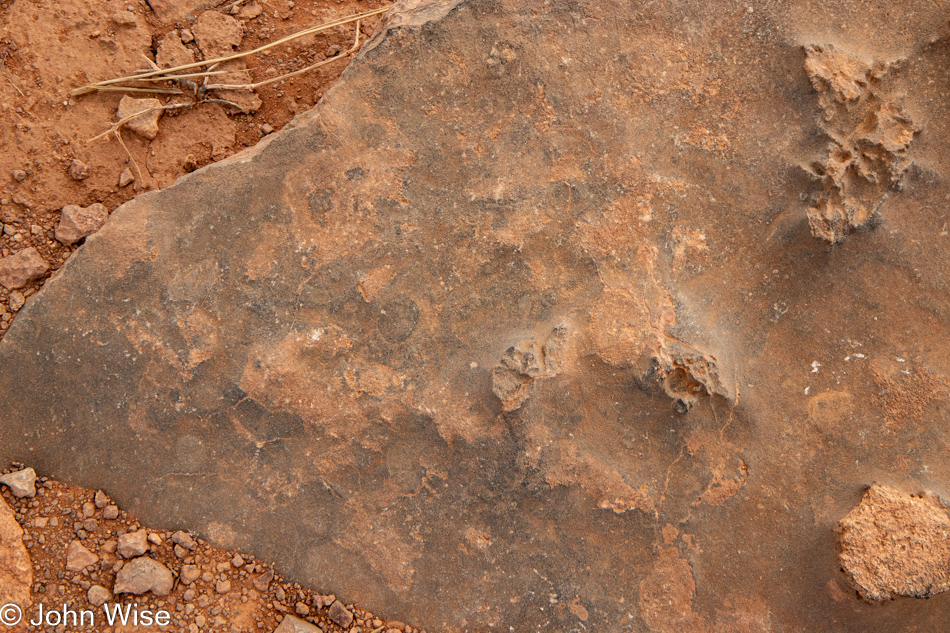
It’s a beautiful 2-mile roundtrip walk out to the trail’s end. Along the way, I’m enchanted by the rock formations we’re walking over as there are hints of a marine past where it appears to Caroline and me that a shallow sea influenced the look of this fossilized sandstone. Caroline picks up on the thought that these look as though they have a milky translucency where she can glean hints of the underlying structure that formed these rocks.
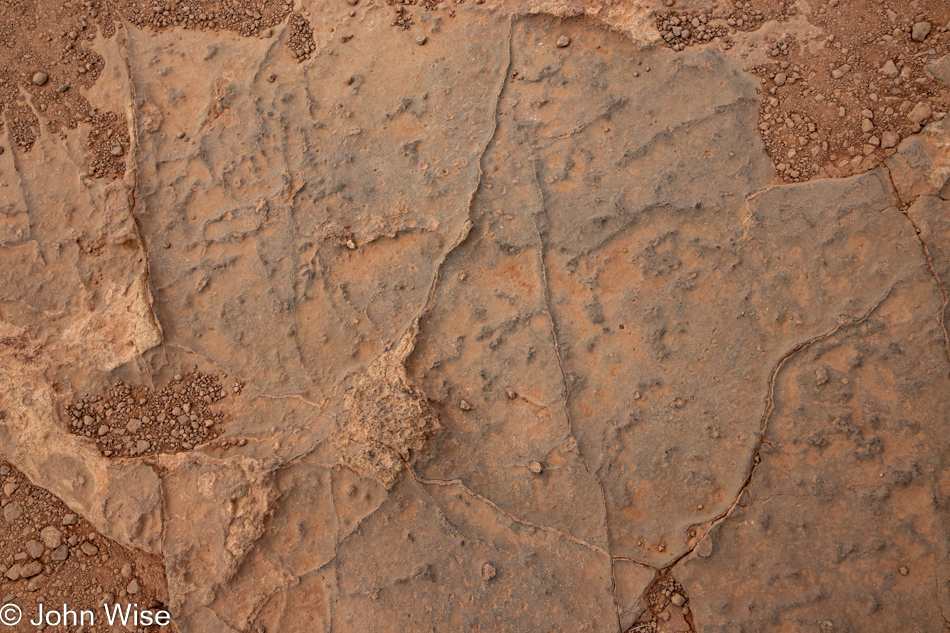
I’ve stared hard, contemplated, and searched my memories, trying to find what this reminds me of, and maybe the best I can come up with is a dry lake bed that’s been compressed by subsequent layers accumulating on top of it. How often do we stop to consider just what it is we are walking on? The reality is that we are walking atop history, usually oblivious of how familiar we’d be with it. If I knew I was walking on a lake bed, a shallow sea, or a broad river bed, it would change how my imagination would contextualize the environment I’m experiencing as I strain to see what might have been prior to my arrival.
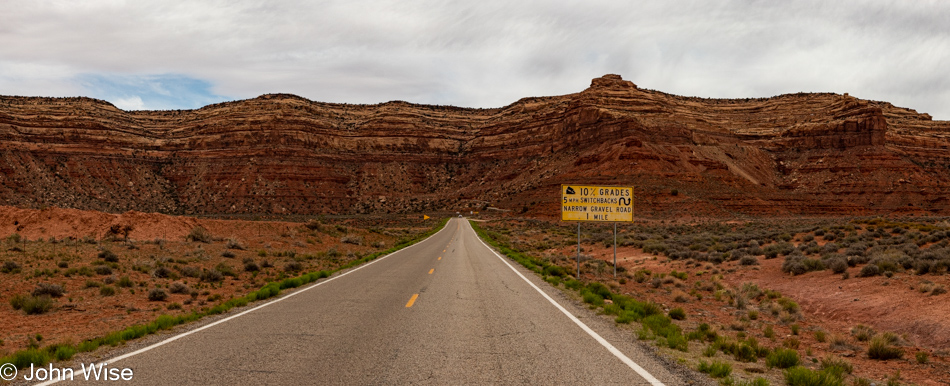
With the overcast sky, we agree that there’s nothing to be gained driving up the scary Mokee Dugway and that we will take the right turn just before the ascent and drive through Valley of the Gods before returning to the road that will take us up Bluff way.
We made the right turn, and not 5 seconds later were making a U-turn to face our fears and drive up the dugway; not my idea, mind you. We know we’ve driven down it a couple of times, but we had no recollection of going the opposite direction, not to say we haven’t, as in having taken so many road trips across the Southwest, maybe a thing or two gets lost to time.

It’s a white knuckle climb up the 3-mile (4.8km) series of switchbacks that will take us up the 1,100 feet (335 meters) needed to find our way onto the top of the mesa. We had the opportunity to learn one bad aspect of going up instead of down: if you encounter someone going down on the really narrow parts, they have the right of way, and you have to back up. This was the point where Caroline was questioning her enthusiasm for this diversion instead of an easy drive through the Valley of the Gods.
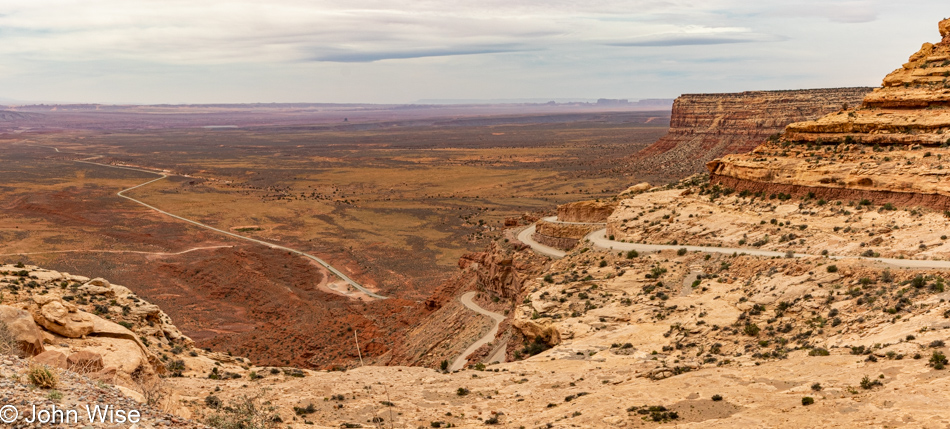
By the way, when we got home after this trip, we looked at our old photos that lay witness to our travels over the Mokee Dugway and now have to question if we’ve ever driven down the narrow dirt road. How could we have lost those memories that we’ve apparently always driven up the Dugway?
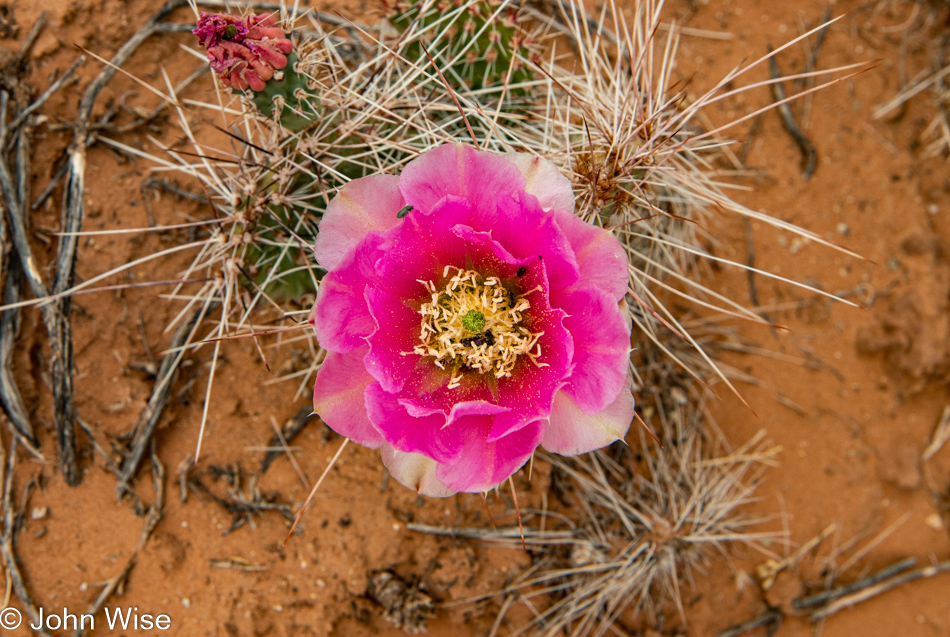
Not prepared to turn around and return the way we came, we continued up the road into Bears Ears National Monument. We passed one spot that talked to our curiosity, but it was supposed to be part of tomorrow’s adventure and so we just kept on driving. When we saw the Butler Wash Anasazi Ruins Interpretive Trail sign, we turned in there as it sounded compelling.

Before our next mini-adventure in the continuing bigger adventure, it was time for lunch. We turned to a new favorite, bologna, and boiled egg sandwiches, but it turned out to only be a snack as in a couple of hours, we’d pull over for another round. Done with that, it was time to hit the trail.

Back when accretion was at work accumulating successive layers of sediments, something was happening here that will remain inexplicable to me. While I have some sense that the oxidation of iron is playing a role in creating rust, I’m desperate to know precisely why this bit of sandstone is red and orange. If it’s being excreted over time as it’s exposed to the elements, then why just here? What are the processes going on in the sandstone that are drawing particular minerals to this location? I should have been a geologist.
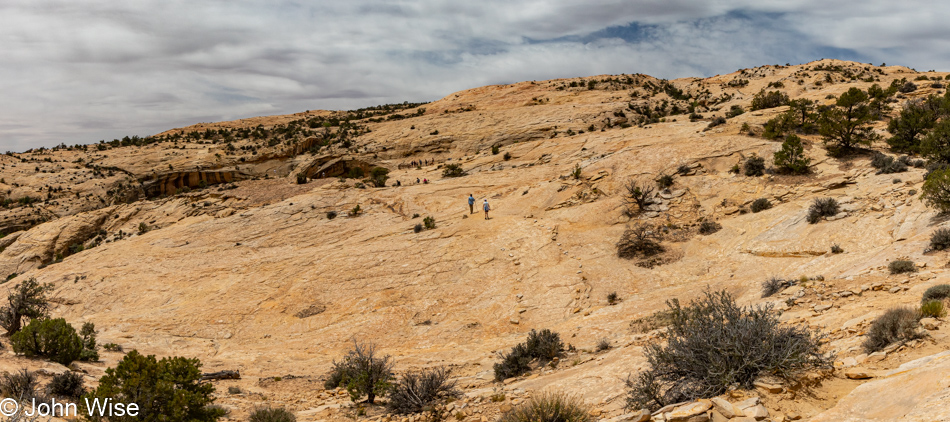
There’s something missing from this photo. Namely, the layers of earth that used to be here but are now scraped from view by good ol’ Mother Nature, who eroded that history and delivered it somewhere else. What remains allows us to see the sand dunes that were petrified somewhere in the distant past. Like a kind of two-legged ant, we walk in the gap of time where once a hidden sandwich from another era hid the story of the earth unfolding.
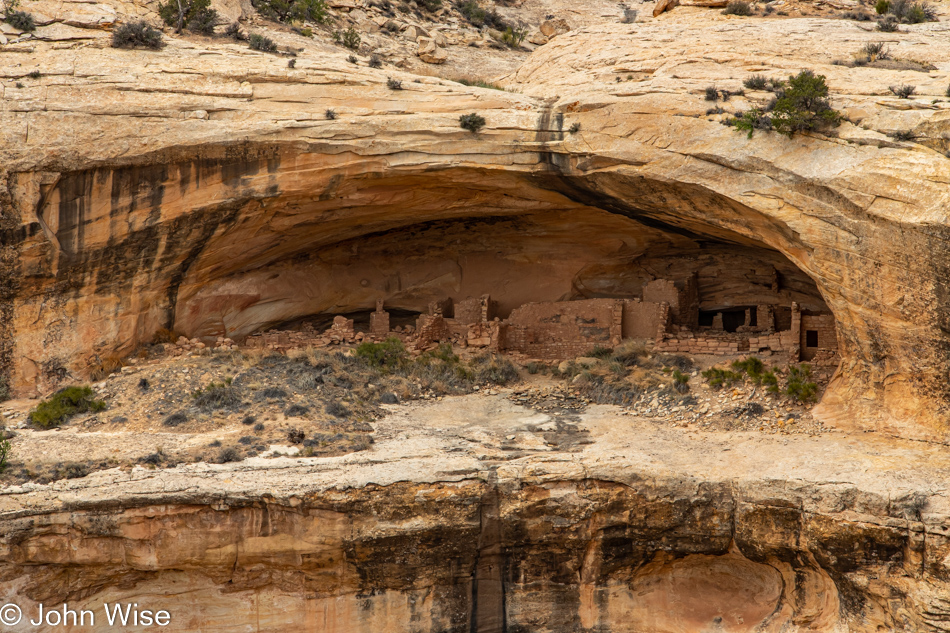
The easy hike was a beautiful one that brought us to an overlook of the ruins; sadly, it was marred by “that” family who are in the universe all by themselves. Loud, obnoxious, and oblivious to anyone else who might not want to be witness to their antics on the other side of a barrier or running over a path as they tried to find a way to visit the ruins in the caves that seem off-limits to us.

Back at the main north-south highway, we took a short drive north to Blanding because, though it was mid-day, we’d not yet had coffee, and we were in dire need. With headaches fading (yes, we are addicted to caffeine) and pep returning to our senses, it was a snack or eat; we pulled over for round two of our culinary delight. Looks appetizing, huh?
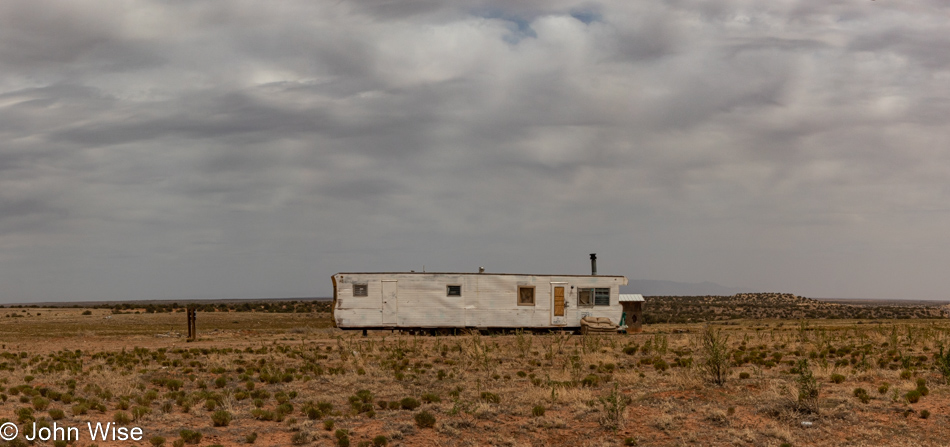
I don’t believe White Mesa, Utah, ever had a golden age, but then again, which Indian lands ever had that after colonization?
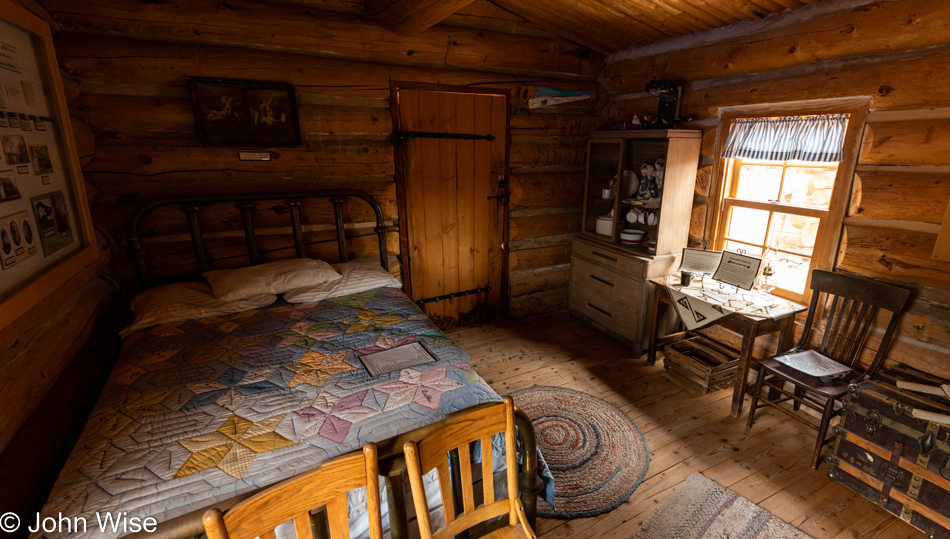
How have we failed to visit the Bluff Fort on previous visits to this corner of Utah? Cynicism is the likely answer, as there’s a certain amount of cheese factor going on, but today, this was a GREAT stop. Thanks to the docents and staff for sharing some great details that told the harrowing story of the pioneers who first came into the area via covered wagons that should have never made the trek.
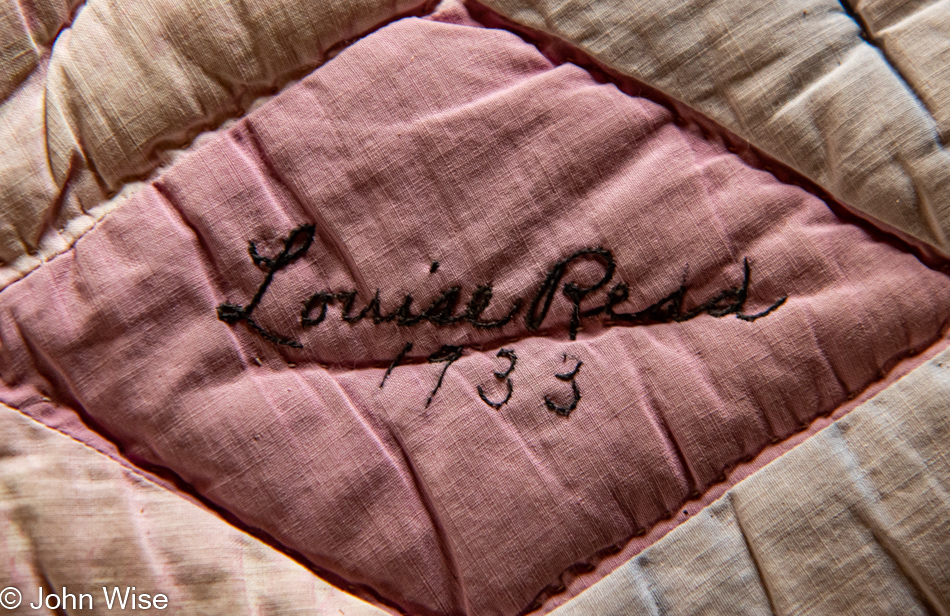
Well then, things come into focus after returning to Phoenix and searching like mad for almost 5 minutes for clues as to why we never stopped at Bluff Fort. The visitor center/co-op building, which is the main focal point of a stop here, wasn’t opened until 2013, and somehow, a decade passed by without our passing through Bluff.
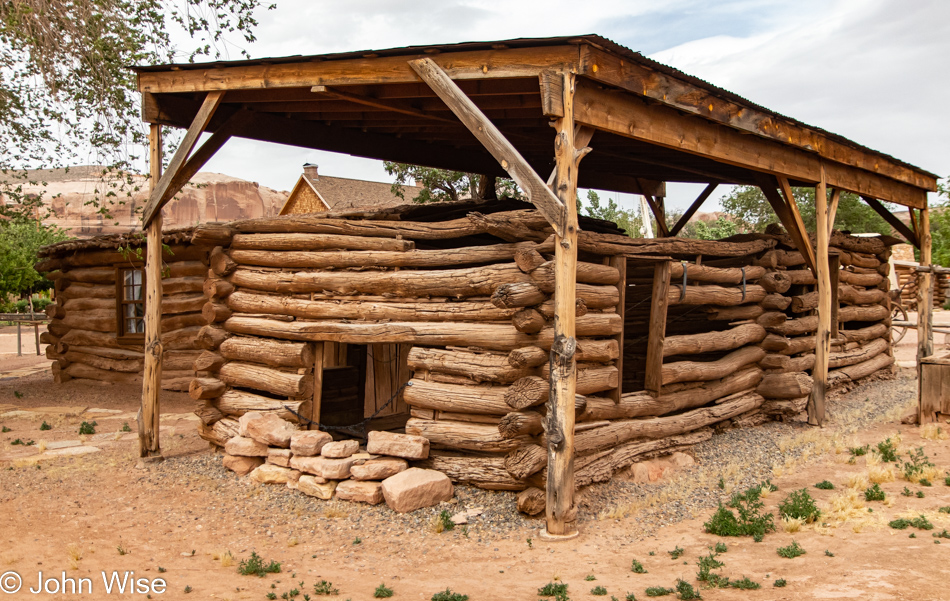
Learning of the hearty natures of the pioneers who toiled to reach this remote outpost is nearly gut-wrenching. They sliced their way through a small gap in a wall of rock so they could go forward, but not before having to use men, horses, and ropes to guide their wagons down the steep, rough trail they’d forged. Then, there were floods from the nearby San Juan River and the simple hardships brought on by being so far away from any other community.
Today, Bluff is heading for the toilet. My apologies to the citizens of Bluff, but the Bluff Dwelling Resort & Spa is the ugliest nod to the artificial opulence desired by a certain elitist segment of our population who have no compunction with gentrifying authenticity with their fake realities. Don’t get me wrong, I really do dislike the pretentious banality that often arrives with wealth, but what is an otherwise poor community supposed to do when the majority of Americans can no longer afford to get off the beaten path? Again, let’s try to find some honesty: that majority could afford to come out to these out-of-the-way destinations, but why would they want to walk away from their self-imprisoned existence sitting in front of another iteration of their favorite videogame, the 17th season of some lame series, or from witnessing the 48th time their favorite sports franchise meets some other team.
Just like Jackson, Wyoming, Steamboat Springs, Colorado, and Sun Valley, Idaho, those places won’t fade off the map like so many American cities as the wealthy have realized the incredible value of living somewhere profoundly beautiful. I guess Bluff, Utah, has the added benefit of having the San Juan River running through it, which in the southwest United States is a treasure when such a valuable resource such as water is disappearing in the larger communities being left by the rich who can gentrify the places they want for themselves. No, seriously, I’m not bitter or anything.
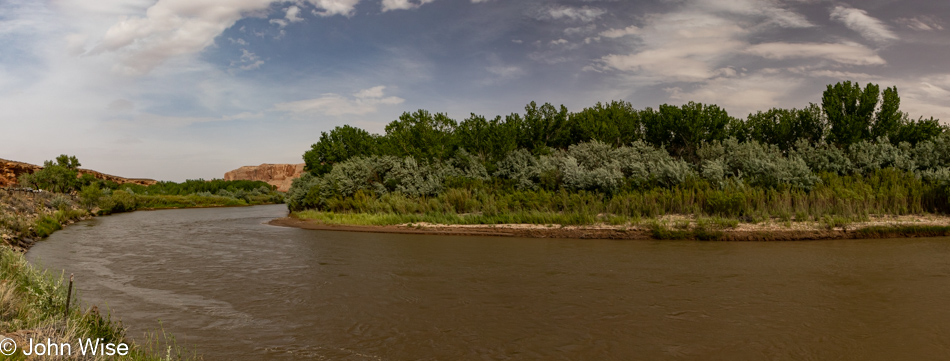
Inspired at the moment by a sign reading Sand Island that pointed the way down to the San Juan River, a quick left turn not only brought us riverside but there’s an incredible panel of petroglyphs.
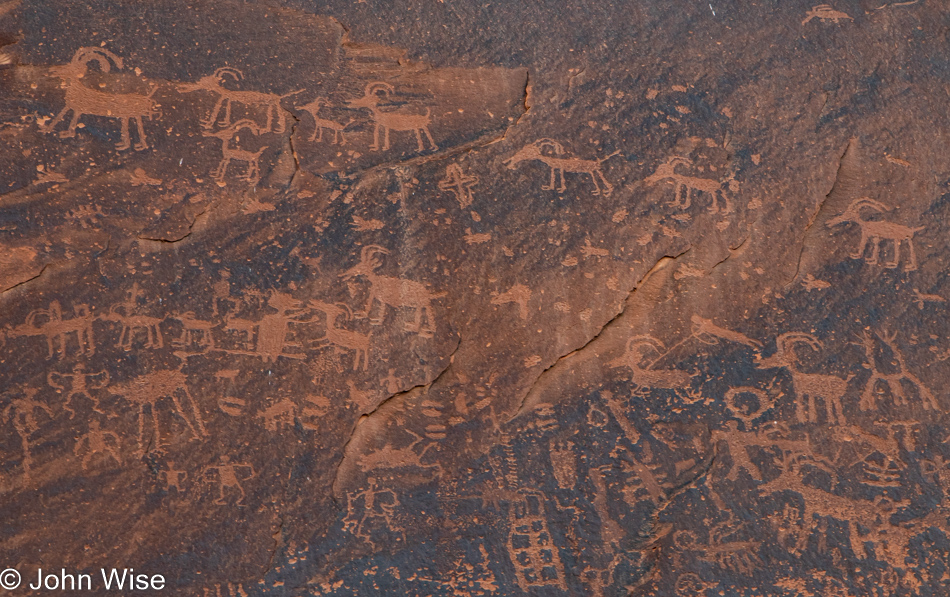
I’ve interpreted this panel for the first time ever; it reads: don’t allow the wealthy interlopers to steal the lands and resources available to all. Too late ancient ones, our souls were cheap fodder easily traded with the hopes we’d be able to take a selfie of ourselves with some rich and famous douchebag who was second in importance only to our children. We are a collective of toolbags. About now, you must be wondering, “Jeez, John, what crawled into your crack?” The sad reality of dreamless people who want nothing more than cheap gas, bullets, and drive-thru convenience.
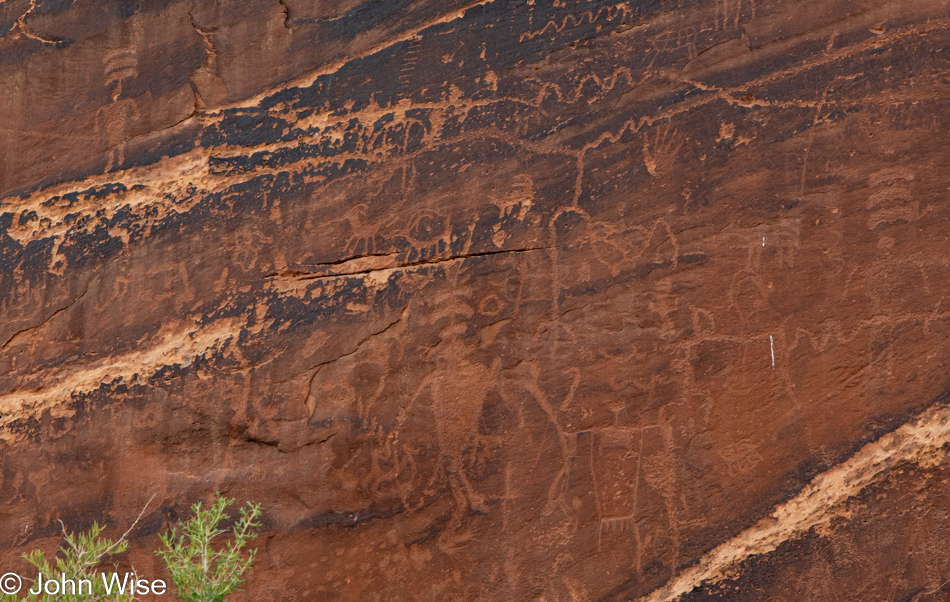
There are three figures here with three bars over their heads; they are tapping into other dimensions to discover how to cope with the future that is going to arrive, where much of their world would disappear in the clutch of the conquering force. Today, I’m one of those persons with three bars over my head looking into the higher dimension, trying to discover how to cope with the conquering force of wealth that has no space for the peasantry of common people just as our ancestors had no space for the indigenous people that populated these lands before them. All around me, I witness the mass of America moving onto a virtual reservation where the resources of the intellect have been stripped bare.
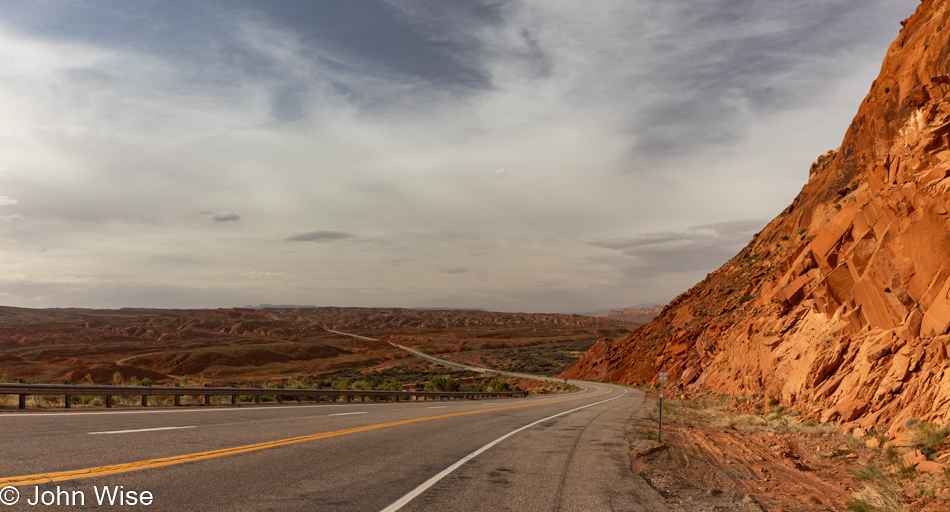
If only I could find the time to write these narratives in situ when I’m resonating with the beauty and happiness of the moment instead of trying to capture recollections of these days a week later. In the interim, there have been 17 mass shootings, with the most recent one happening in the past 12 hours right in Phoenix, Arizona, where I’m trying to write this. To say I’m distracted by our abhorrent and vulgar attitudes when these incredible sights should soothe our abysmal and wretched selves would be an understatement. Aside from Caroline’s and my opportunity to indulge in such wonderful distractions, where am I supposed to find hope that America isn’t headed into the abyss of self-destruction?
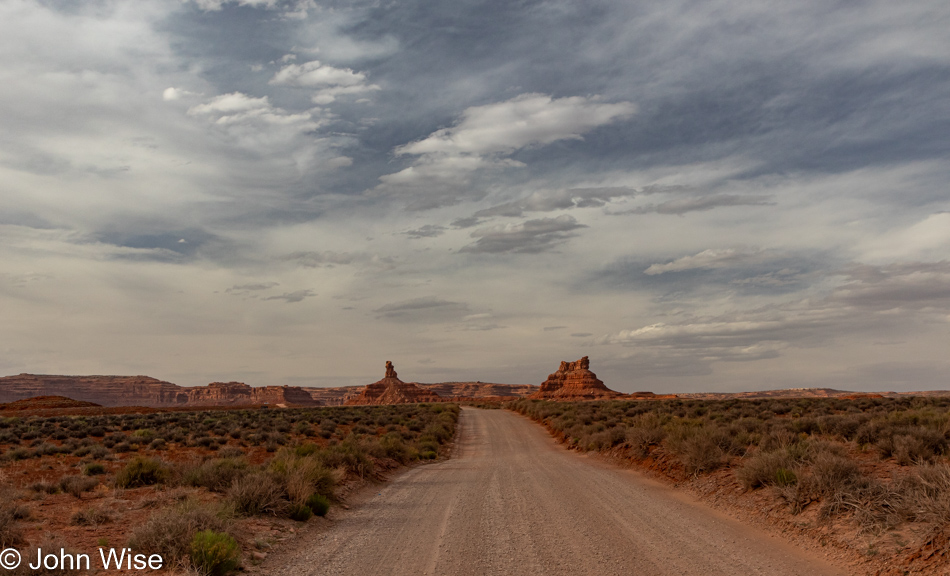
But this post is not supposed to be about the woes afflicting those I cannot see; I’m here to capture not only the visual impressions of a couple in love traveling into deeper love but also to write about the gravel, clouds, scrub brush, dust, bumps, colors, and the oohs and aahs found between the sighs of wow from the woman traveling with me.
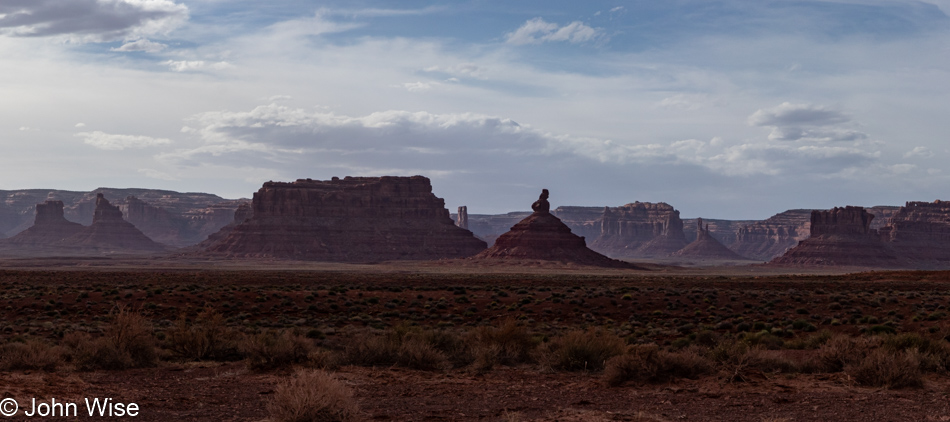
Welcome to Valley of the Gods.
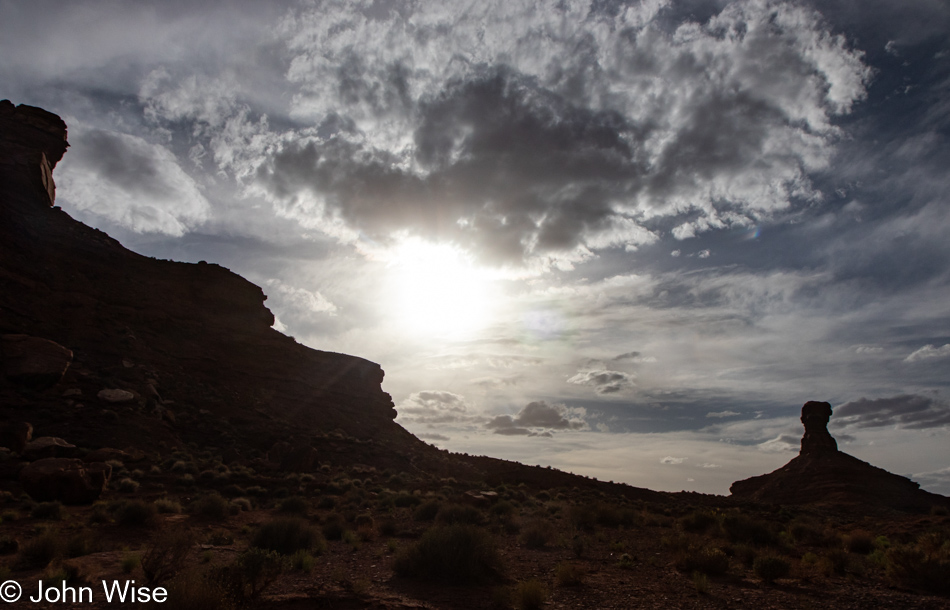
Here, in the presence of such a large nature, we bow in the silence of awe. It was either something like that or a non-stop series of under-the-breath utterances of wow in between, repeating how incredibly lucky we are to afford ourselves these experiences.
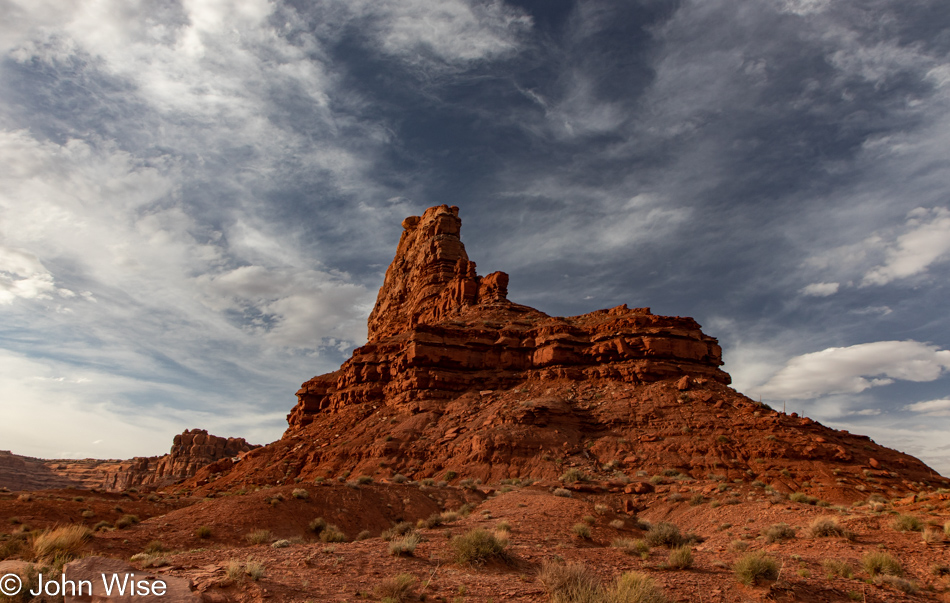
Had we opted to venture onto this 17-mile drive this morning, we would have traveled under the gray, overcast sky, so this is working out perfectly. Another thing, compare the price of this drive (FREE) with that “other” 17-mile drive ($11.25) taking looky-loos past pricey homes (median price about $5 million depending on the source) and derpy golfers who effectively dropped a testicle on the green as an offering to play Pebble Beach ($575 for a round) and you’ll either guess that we are relatively poor or class snobs resentful about our own bourgeoisie status, maybe both?
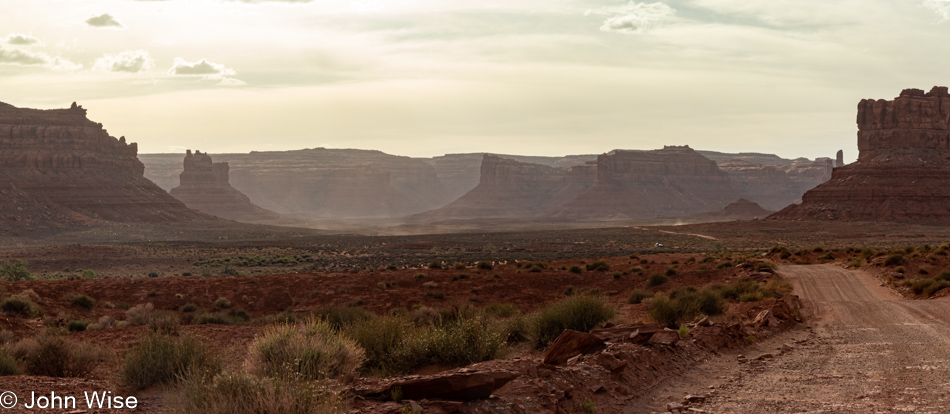
I admit that the 17-mile drive in Carmel, California, has the Pacific Ocean, but with a little imagination, one can still witness the inland sea, oceans, and lakes that once welcomed marine life right here, and don’t forget the dinosaurs.
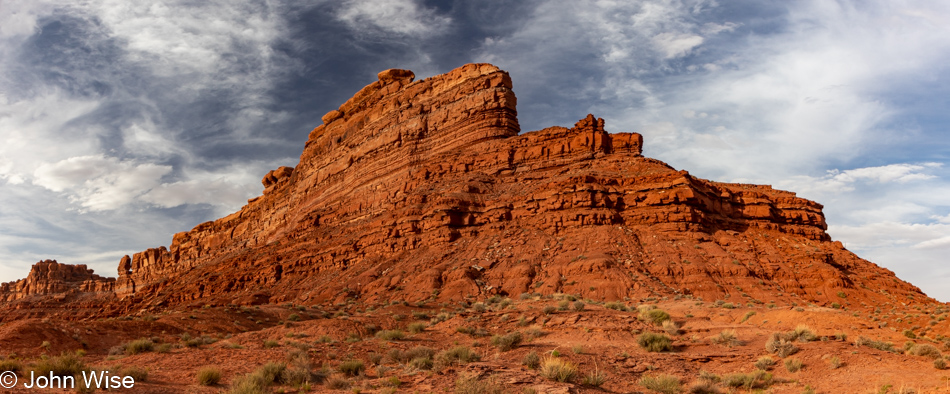
I just went on an internet hunt to find out if this butte had a name, and while I came up empty-handed, I did find more than a few unsatisfied visitors to Valley of the Gods. I could take 100s of images of a pile of poop on a sidewalk, but I doubt I would ever find even one that represented an aesthetic that might inspire others to look for the best in random poop left in our environment. On the other hand, there are those who share with others reviews such as, “Meh” and “The first few miles were OK. After that it got pretty boring” about a majestic place such as this. I understand that we all have a different sense of what constitutes beauty, but to be so devoid of empathy, soul, intrinsic values, or a basic understanding of how time and earth sciences create such unique complexity just casts those imbeciles into the pool of troglodytes.
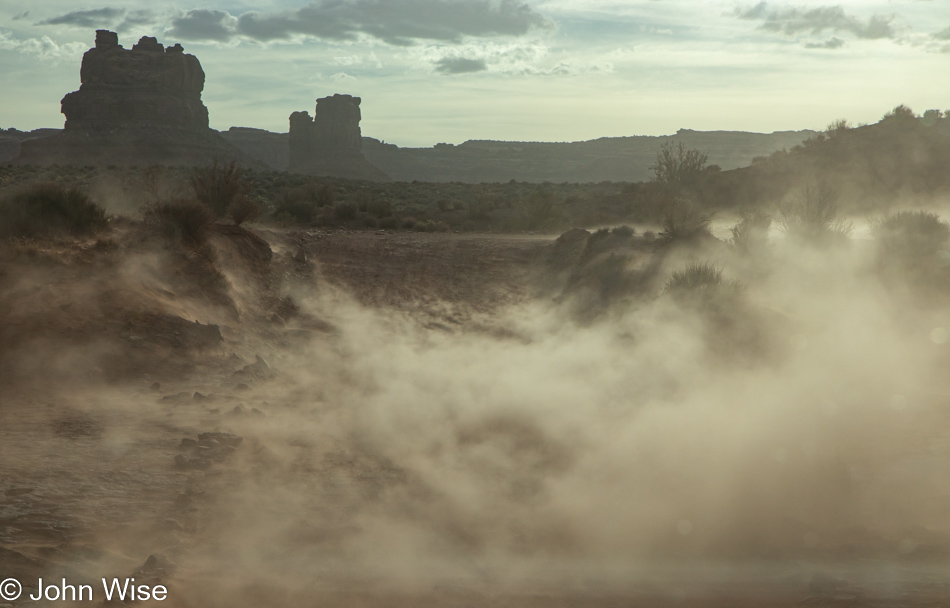
Oh my god…just look at all that dust blowing up in the hostile winds, trying to antagonize my allergies and ruin how clean my car is. What’s wrong with nature obscuring my view and wrecking photos? I hate Valley of the Gods; it’s just a bunch of boring meh-ness with no redeeming qualities aside from the fact it doesn’t carry an AR-15 to mow us down as we drive through. Why are we even out here in this monotonous land of endless tedium where everything is ugly and stupid? You know what’s tedious? This snark that detracts from settling into extolling virtues of yet another place we passed through in, yep, you can guess it, AWE!
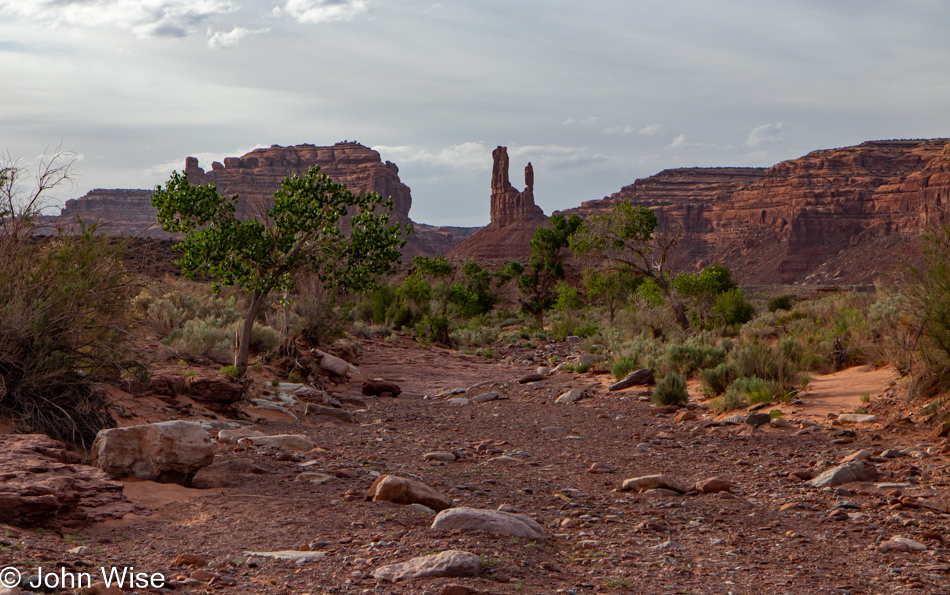
Greenery in the desert is a sign that water runs through here. The astute will know that this is a wash on those rare occasions when rain has been falling in the surrounding area. I’m simultaneously happy we are not here while it’s raining (we’d certainly be stuck in the mud) and disappointed that we can’t be on hand for one of those moments when water feeds the dry earth we’re traveling over right now.
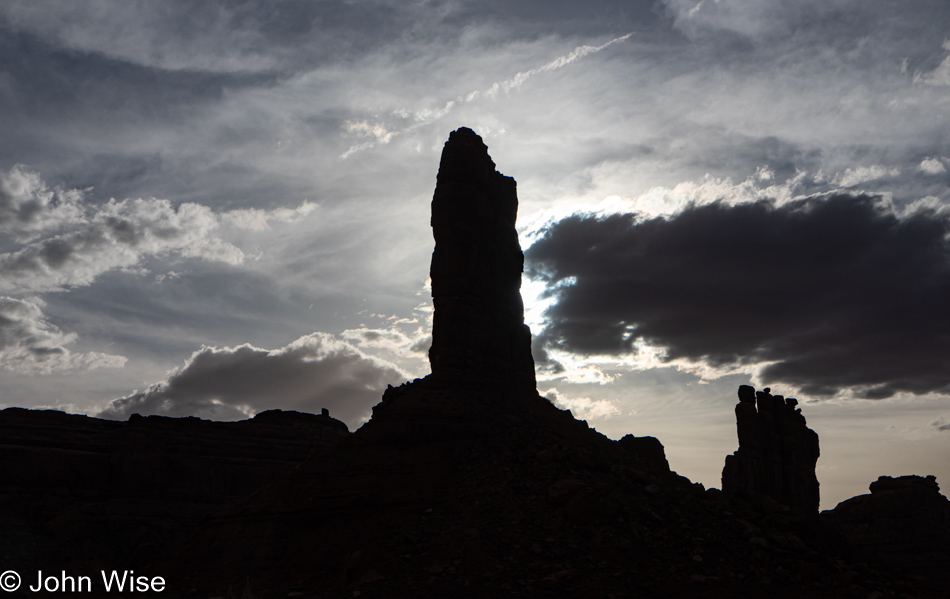
Every turn, every moment, every view is changing the way things look. By the time we reach a place, it often appears quite different than it did from a great distance, from just 200 feet away, and the spot we stopped at to take a photo. Perspective shifts sure are easy in the great outdoors if you are looking for them, so why are they so hard to come by as people look within?
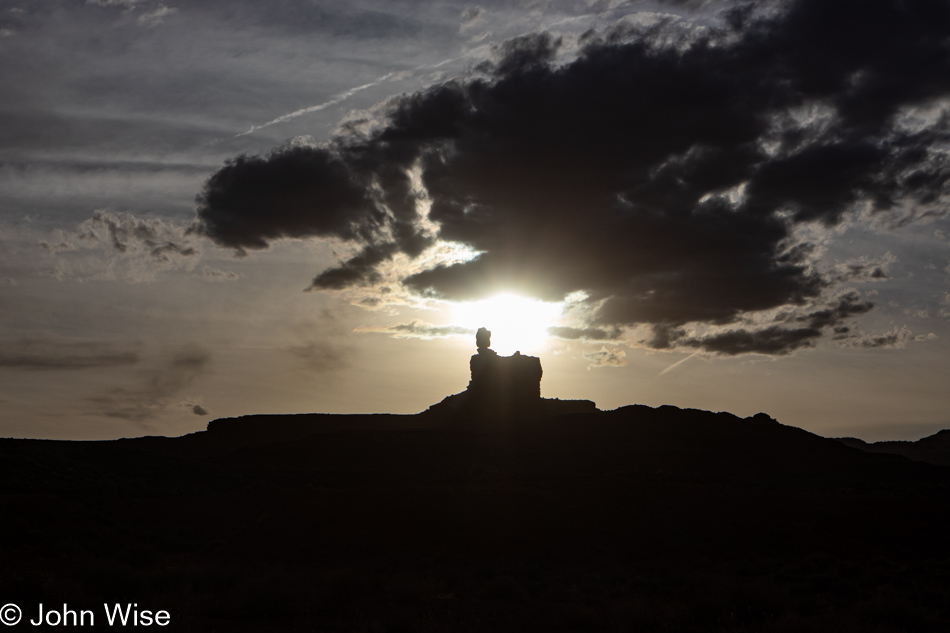
The sun will set on the landscape but only temporarily, as opposed to the imminent day when it sets on us for eternity. Until that day, how many sunrises and sunsets will you have seen, not metaphorically in the sense that you were aware they were happening and could picture them in your mind’s eye but that you’d seen with your own eyes? Why isn’t the real mark of luxury the cumulative number of times we can lay claim to having watched waves lap at the shore, witnessed the leaves of fall change color, seen the bud of a cactus blooming, or the coming into focus of a rainbow spreading across the sky? The obvious answer is that we cannot easily parade impressions around but we can arrive in the right car, have the big home, or the pricey clothes that offer nothing about how rich someone is experientially.
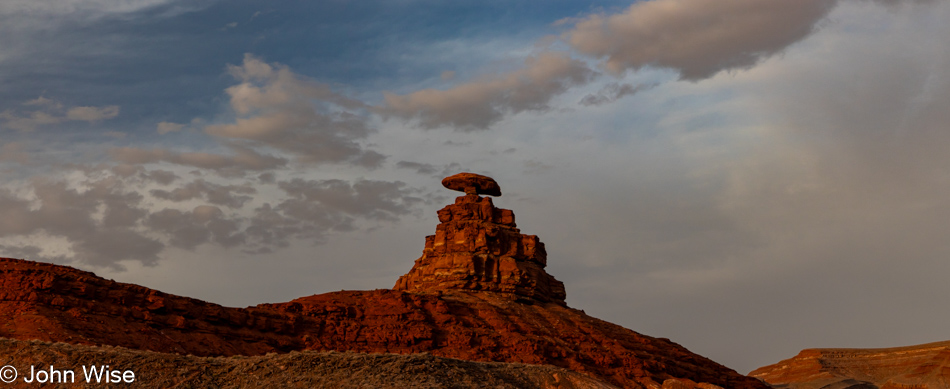
Maybe you’ve read all this before right here on my blog, but I’d argue that just as I never tire of seeing this rock balanced atop a small butte that inspired the name of this community of Mexican Hat, it, like my words, enter reality and hang out until time and nature erodes them until they crumble and are lost in time. So if you continue returning to these pages, the canyon that is John is what you are visiting, and while the angle of the sun, the position of the clouds, and the time of day might alter how things are seen, you might witness much the same thing until an arm from my river of thought carves a new pathway that breaks out of the routine flow.
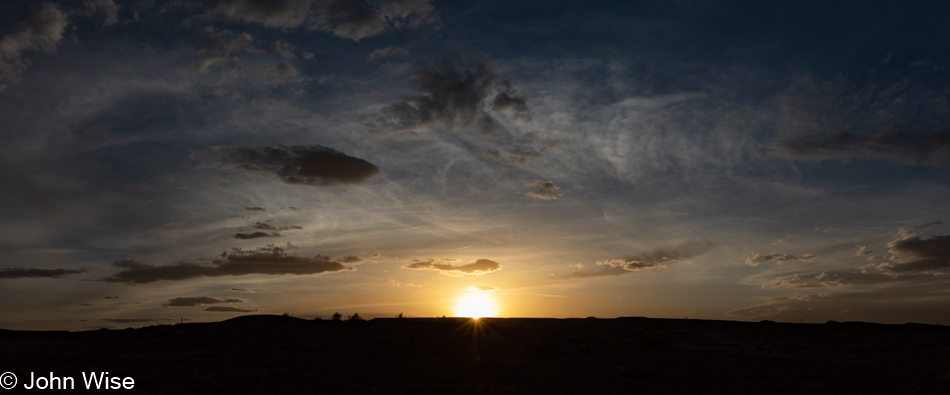
Enough of this; it’s time to eat, not only for the day the events pictured above took place but at this moment I’m writing these words. Seeya later, sun. With my senses satiated, I need to heed the beckoning of my stomach, though compared to the exquisite nature of the meal that followed on this travel day, the lunch I’m about to jump into pales in comparison. On second thought, there is no comparison.
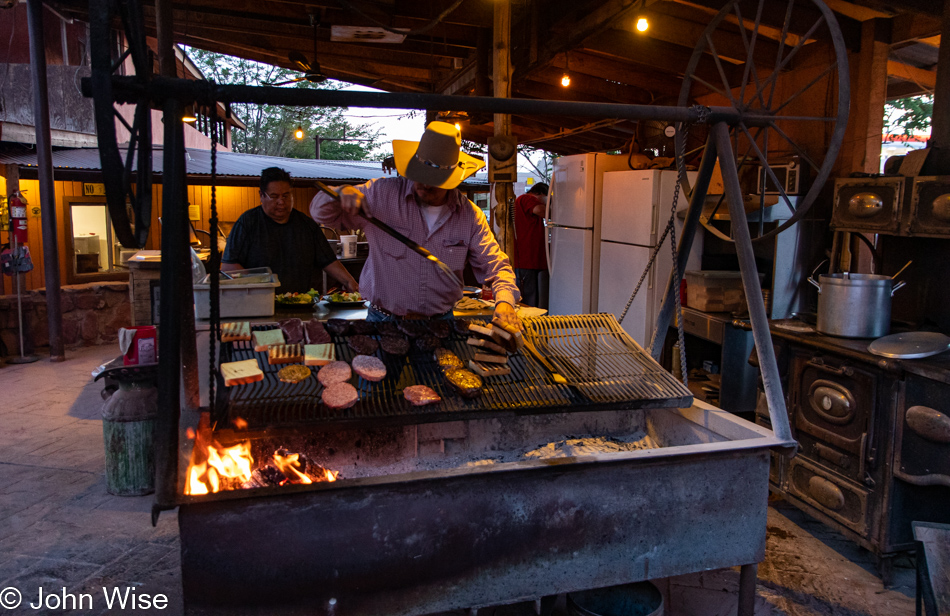
This is grill master Hank Whipple, whose family operates this outpost called Mexican Hat Lodge, affectionately known as the “Home of the Swingin’ Steak.” Last night, this man grilled me up a 20-ounce (almost 600 grams) ribeye steak (entrecôte), but eating that whole thing after 7:00 pm was a mistake in judgment because that hunk of meat lying in my gut commanded serious attention, thus disrupting any hope of blissful sleep. So, tonight, not only are we eating earlier, but I’ve opted for the more manageable 8 ounces (228 grams) of flank steak. As for Caroline, come on, she’s always reasonable.